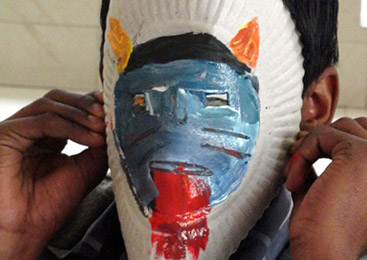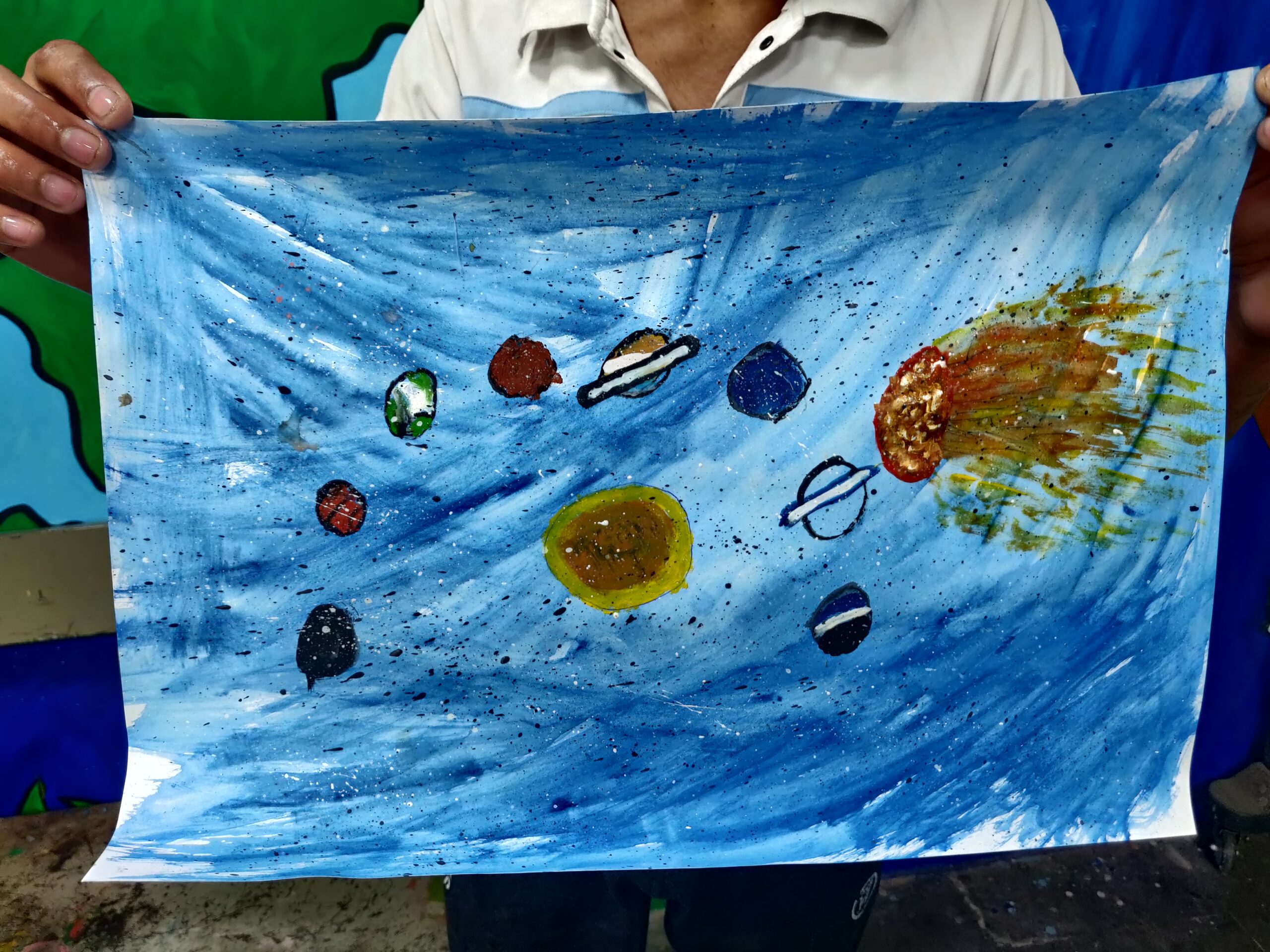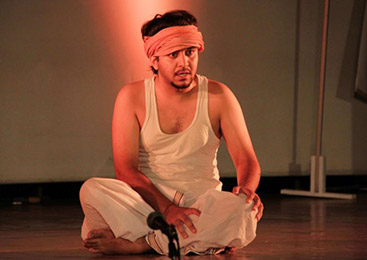Interns Diary, An Hour in Jahangirpuri
02-Dec-2018On Thursday last week (July 21, 2016), I had the honour of receiving a personal tour of the notoriously infamous Jahangirpuri. It was built in the 1970s as a resettlement colony for the countless immigrants that had swarmed into the capital city in search for jobs and a better life. However, the unfortunate truth was that the capital could seldom offer many of them even a roof over their head. Today, this colony, which was built with the aim of providing these people with a better, sheltered life has turned into a place infested with serious drug, crime and waste management problems. The most obvious instance of the trash problem is the huge waste dump that exists behind the colony. The backyard of the colony is a massive space filled with garbage from all around the city, and while it has some serious health and hygiene implications, it is one of the ways in which many of the people in Jahangirpuri make a living. There are a lot of of recycling units around the colony, which employ young boys to search through the waste dump and gather recyclables such as thermocol, plastic or paper. This is not only good for the environment but also for the society as it promotes societal awareness and monetary support for many of the families living there who do not really have better alternatives for their basic income. However, the boys that work in this field, colloquially known as the “kabaddiwaalas” are infamous for their bad behaviours, notably drug addiction, as they tend to spend the little money they earn on drugs or get easily involved in the gang trade. Moreover, working in such unhygienic conditions is hazardous to their health as they could attain all sorts of diseases from the constant exposure to waste and garbage, as well as get physically harmed in the process. For example, it is very common for them to get cut by broken shards of glass. The other issue with garbage and waste in this part of town is the sewage system. The sewage canals are not covered and so there are obvious issues with this such as the flooding of this nasty water in the rainy season. Moreover, the potent smell doesn’t help the case. However, what shocked me more was that the sewage pumping station in the area would pump the sewage and dump the junk they pumped onto the banks of the sewage canals, which meant that the streets would be covered in this nasty-smelling, unhygienic sewage disposal, with no means of any sort of cleaning process. Their job was to pump it out, and so they would do just that, and leave it there to stink up, and contaminate the colony that thousands lived in. We then visited the school, and I was surprised to know that each of the 12 original blocks has its own government school. There were a few things that pleasantly surprised me regarding these. We visited the D-block government school for girls and boys. While the school was not co-ed, both girls and boys learned in the same building. The system had been organized in such a way that the girls’ school ended at 1 pm, and the boys’ school started at 1.30 pm. Thus two schools were running in the same building. We first visited the principal of the girls’ school. While I didn’t speak to her much, I was pleasantly surprised to have met a special educator who taught disability children in the school. I was taken aback by the fact that a government school offered such facilities to their students, especially when education is free-for-all until the age of 14 in India. She further explained that the system employs these educators as an extra help to their students who spend their days in regular classes with the other students, and are given special attention by these educators outside of the classroom. This impressed me to the core, it was like a breath of fresh air. As a psychology student I study about the importance of a system that identifies and understands the need for special attention for children with disabilities, and I left that day with a much needed faith in our education system. However, we didn’t have much time to discuss the system through which they identify the kids with disabilities, and the training that special educators undergo. This is something I’d like to research further. Also, it is important to note that I only had a preliminary conversation with her which only allowed me to know that there is a system in place for disabled kids, I wasn’t however able to assess the efficiency of the implementation of said system, which is also something I would like to further research. We then met the principal of the boys’ school, and I was quite impressed by him. He shared a similar passion for education to me, and seemed to understand the importance of a holistic education in India. We didn’t have a long conversation, however from what I heard, the education minister frequented the government schools in the area to see how they were running. This again pleasantly surprised me. He also explained that the theatre workshops that the Yuva Ekta foundation was conducting in the school were really helping the students, and that enabling more emphasis on non-academic learning was is an important part of their learning. I can also assert, with full confidence, that his favorite word was ‘congenial.’ All-in-all, my visit to Jahangirpuri was filled with surprises. I expected to be surrounded by a slum, however I was surrounded by numerous flocks of girls in school uniform walking back home. At the expense of sounding like a typical, oblivious NRI, to be able to see so many girls receiving an education in a country like India really made my heart proud. While there is a serious concern in this place when it comes to drugs and crime and poverty, I honestly think that raising awareness and promoting education will really help the society take a leap forward into bettering their own lives. it is important to remember that rather than giving them help and aid, we must give them the resources to improve their own lives, the power to help themselves. I feel honored to have walked through the streets of Jahangirpuri, and more that that, I felt proud that despite the conditions some of those people live in, they still strive to improve on themselves. – Kaviya Garg is a student at the University of California, Los Angeles, currently pursuing a B.A. in Psychology with a minor in Linguistics. Her passion in life, other than food and travelling of course, is education. She wants to help create a more holistic education system that provides enough emphasis on the importance teacher education and awareness as well as just the students.
MORE ARTICLE FROM OUR BLOG

Volunteer’s Diary- Sahyog
Entering the gates of Sahyog campus triggered a series of emotions in me. Was it anxiety or fear or anger or compassion or curiosity? I don’t know! I entered the campus with an empty mind. I tried not to have any presumed notions about these juvenile offenders. The term ‘juvenile’ is used for person below the age of 18, accused in any crime. Having worked with children before, I believe these children were a little different. However, they were and they did behave like any other child of their age group would have.
Freud’s Psychoanalytic theory suggests that personality is mostly established by the age of five. Early experiences play a large role in personality development and continue to influence behaviour later in life. If these psychosexual stages are completed successfully, the result is a healthy personality. If certain issues are not resolved at the appropriate stage, fixation can occur. Perhaps, this issue makes them different from other children. Dysfunctional family, certain incidents, addiction, poverty, illiteracy, lack of guidance affects them.
Consequently, I was there to grasp and learn all I could, therefore I did not want to talk or do anything. I did not want to interrupt their activities. I just wanted to observe. Observe their actions, reactions.
I was amazed to learn how they had perceived of me as their ‘female’ volunteer, my clothes and my gestures. I was shot at with vulgar comments momentarily. They excelled at playing and twisting my words, so as to change its meaning completely. To their surprise, I was good at dodging them. With my presence, I was determined to bridge the gap. Their constant gaze at me confirmed the urgency of the same. We shook hands, talked, and laughed.
We started with the workshop, with over 30 boys. We worked on painting and decorating matchboxes.
I was happy to see the positive reaction towards the workshop. I took as a sign of acceptance. There were moments of vexation. However, my aim was to read into their minds, rather than sit back out of disappointment. Matchbox was just a medium. Whether they painted it or not, didn’t really matter. Small dusty hands, with chewed nails, scribbling black and white stripes, and then painted it all black, when almost a beautiful unpredictable design was going to come out. Some chose to keep quiet and observe, while some found it impossible to be quiet. I was amused to overhear a myriad of comments.
It was perhaps because of lack of interaction with the other sex. Their curiosity about the other sex is incomplete. Coming from dysfunctional families, the very idea of one’s mother, sister or a friend was still hazy. Most of them come from backgrounds where a casual friendly relation with the opposite sex is stigmatized. There was a tendency in them to emulate all ”film stars” and bollywood actors.
Bruise and cuts on their wrists and arms were enough for me to understand their extent of extreme feelings.
With my presence, I hope to abridge the gap between ‘us’ and ‘them’. They are disheartened and some have lost hope of coming back on track. I don’t want to be an idealist to them, but just wish to expose them to the normalcy of life, be it towards women, elders or law. Their expression in the form of art can be our path into their minds.
– Sanya is a Masters student who has been volunteering with us for a month. This is her feedback from her first session at SPYM Sahyog de addcition home.
READ MORE
Colours of Hope!
The workshop that me and Poorva had thought of did not have a structure. It stemmed from a simple idea: no structure, just boys, paper, and the freedom to let the brush guide them. The world that the boys live in is already structured and bound by rigid rules. Adding more structure would just mimic their daily routine. Imagination is limitless but while talking to the volunteers at the home I realized that imagination can be limited if one is never allowed to explore and think beyond one’s boundaries.
While talking to Puneeta there was a discussion on people who come from outside for workshops can be a sign of hope for the boys. I do not know how I can be a sign of hope at times because I struggle in my daily life to find hope in terms of my future, but maybe because I do not have any literal constraints such as the bars that surround the boys but only the constraints in my mind. Maybe because I can see the sky without any physical/material constraints and can draw the Sonipat skies without having to emphasize the jail bars in my painting. Maybe because for me freedom is easy and taken for granted.
When we started to distribute brushes and paint there was a sense of confusion as the boys had to make their own choice in selecting the brushes like they didn’t know what and how to choose. When we began to paint few of them just sat down and looked at the empty canvas and other the room to search for an inspiration or idea. Some were skeptical to even pick up the brush and start using watercolors because it was new, and no colors appealed to them. Black dominated the palettes of five or six boys. It resonated with me. Why black? What darkness did they find in that shade? Did it grant them the courage to explore other colors, or perhaps express the darkness within them? There I was, surrounded by black, starting my own piece with vibrant reds, pinks, and greens. Paradoxical? Two realities coexist. But slowly, their paintings transitioned from darker shades to a lot of blue, sceneries, and smiley faces in inanimate objects.
I don’t know if the workshop will be fruitful in the long run, but I do hope that their imaginations will not be bounded by constraints of the society and boys will be shackled by the darkness of their past. Like any other teenager, I can only wish for them to find their happiness in the realm of their imaginations if not anything else.
– Eshani Bora, Young India Fellow, Ashoka University
READ MORE
Sweet Reminiscence
What does it take to not forget something? Has it ever happened to you, that when you return from somewhere you have a difficult time adjusting at home? Withdrawal symptoms (as close as it could get) a plenty and you keep asking for more of the same experience. The only thing you think about for sometime is when, where and how you will get an opportunity to go back to the same place and experience something completely new? The true meaning of the term unforgettable is learnt. When you narrate stories of your journey, your mind leaves you gasping for more. Nostalgia, happiness, a weird feeling in the stomach, everything that makes you believe that this journey was special.
I don’t exactly remember when the process started and I certainly know it hasn’t ended. Once upon a time when we only thought we would be in Glasgow one day is now a time, existing, flowing, real and lived. We weren’t tourists (only), our intent was clear. That one hour in which we get to perform our play made the trip of ten days possible. ‘Shoonya se shikhar tak’ is therefore a landmark in my life. The intense training, workshops and preparations for this production has been growing experience. As an actor and as an individual, I have unmasked a lot within me. Shoonya se shikhar tak has not only made me realise the power of my dreams, but also my abilities to work on them. I can proudly say this intensity has made me lighter and stronger at the same time. The magical part is that i dont even know when this process started. It just seems smooth now that I look back on all these memories with fondness.
All of this however wasn’t limited to the one hour in the rotunda. But I think that this growth took a different course from there. Now that I think about it, I can’t find any words to describe my feelings the first time I stepped on the cushioned stage of the rotunda. The first time I ever tested my voice inside that dome, the first time I walked, crossed from one side to the other. Each movement of my body made me want to get that emotion more and more and made me never want to end this experience. And that one hour, when all our rehearsal time, our practise came to its actual test, the hour that made it all possible was an hour that I want to keep reliving. That one hour in which I was vulnerable, both emotionally and physically, on stage and especially off it is the hour I crave. As if that’s the kind of reality I want to keep living. Shoonya se shikhar tak has reached its first shikhar. I think it is time we take it forward, continue to work with ourselves and with this experience and make this journey limitless.
Its not so much about living a dream. It doesn’t hit you always that what you thought of once upon a time, is a reality you’re living. Its after you’re back, trying to adjust with your life that you realise that you just lived what you yearned for. I want to live it again. And keep living it.
For all this and more I would like to extend my heartfelt gratitude to everyone concerned and everyone who made this possible.
“Mere sapnon ka Yeh andaaz hai, ki har rang mein shaksiyat kuch khaas hai.
Mai kehta hoon Bohot ji li zindagi, Woh kehta ki abhi aur Jine ke aas hai.”
– Rijul Kataria works as a Research Coordinator with the Foundation. This blog was written as a part of the Tin Forest International Theatre Festival in 2014
READ MORE




